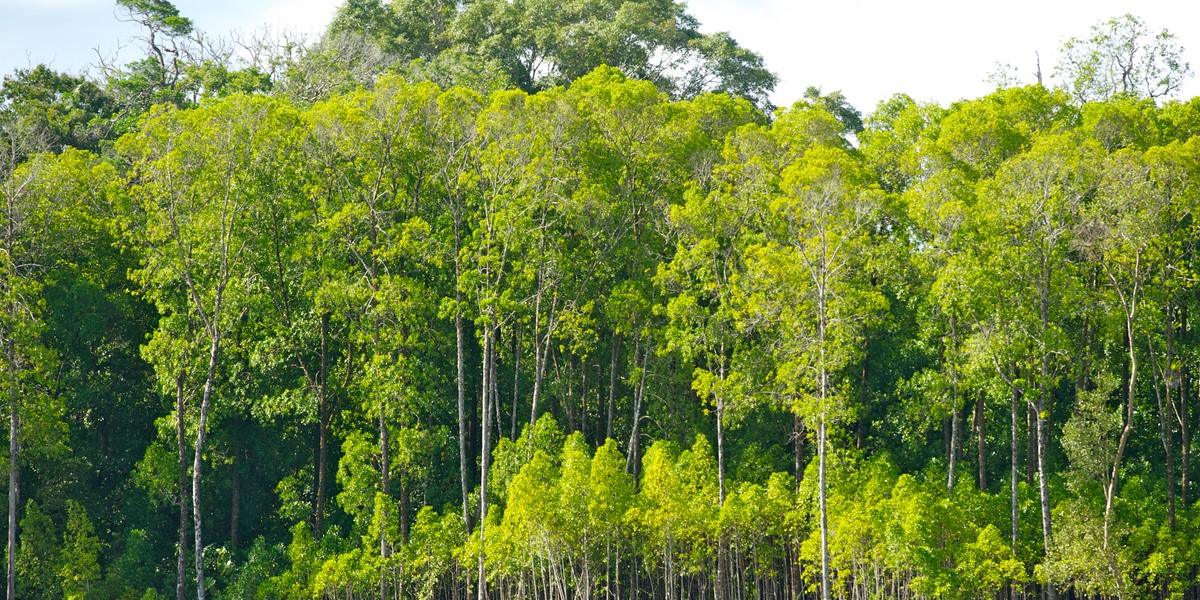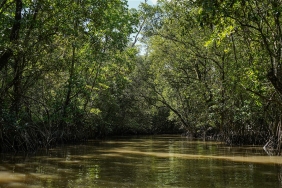LET'S PLANT, PREVENT COASTAL ABRASION WITH MANGROVES
Coastal erosion that occurs every year has threatened a number of areas on the north coast of West Kalimantan Province. Among them are residential areas, residents' plantations, and road infrastructure.
WWF-Indonesia again invites coastal residents in four areas of West Kalimantan affected by abrasion to plant mangroves. To date, the total planting in four locations covering an area of five hectares has reached 36 thousand stems from a total of 40 thousand mangrove seedlings to be planted.
The problem is abrasion that threatens settlements, residents' plantations, and road infrastructure," she said.
The four areas affected by abrasion are Sungai Mas Village and Penjajap Village, Pemangkat Subdistrict, Sambas Regency; Setapuk Besar Village, North Singkawang Subdistrict, Singkawang City; Sungai Duri Village, Sungai Raya Islands Subdistrict, Bengkayang Regency, and Sungai Duri 1 Village, Sungai Kunyit Subdistrict, Mempawah Regency.
As a backup, 10 thousand seeds (fruit) or 25 percent of the total restoration were prepared to be planted as replanting plants if there were dead seedlings as well as planting test materials in critical locations without mangroves in the vicinity.
The planting, which began on February 14, will end on February 28, 2015 with the planting period adjusted to geographical conditions. In case of bad weather or big waves, planting cannot be done until the weather is calm.
In Setapuk Besar Village, the first phase of planting 3,000 Rhizophora mangrove seedlings has been carried out in an area of approximately 0.3 hectares. In recent years, this coastal area of Singkawang City has experienced abrasion and threatens local residents' coconut plantations.
Chairman of the Surya Perdana Mandiri Mangrove Care Group, Jumadi, said the abrasion that occurs every year has eroded residents' coconut plantations. "The most threatened are coconut plantations, and that has an impact on the economic conditions of local residents," he said in Singkawang, Tuesday (18/2/2015).
The majority of members of the group, which was founded four years ago, make their living as fishermen. They are determined to restore the mangrove forest, which is in poor condition. Apart from threatening residents' coconut plantations, abrasion also threatens fish and crab stocks in the fishing area.
This effort to reforest the coastal area attracted local fishermen to join in. "For the second phase of planting, we will plant 4,000 seedlings with an area of approximately 0.4 hectares. We will also replant plants that do not grow successfully," continued Jumadi.
The planting in Setapuk Besar was led by the local village head, Adi Haryadi, followed by dozens of residents who are members of the Surya Perdana Mandiri Mangrove Care Group, Sispala CAMAR SMAN 1 Singkawang, and WWF-Indonesia West Kalimantan Program. "I hope that the planted mangroves can grow well so that the rate of abrasion can be reduced and be useful as a breeding ground for fish and crabs," Adi said.
He also hopes that the Surya Perdana Mandiri Mangrove Care Group can continue to increase their love for the environment. In the future, they are expected to continue to exist and be solid so that they can become an example in the campaign for environmental love.
Meanwhile in Penjajap Village, the first planting was 6,000 seedlings with a planting area of about one hectare. Penjajap Village is a village with a population of around 12,149 people and an area of 450 hectares where the area continues to decrease due to erosion of sea water and threatens residential areas.
Chairman of the Mangrove Center Foundation, Yeni, said that currently there are four houses in the Menara II area whose position has been above the water. "Some residents' houses have become victims of abrasion," she said.
Pemangkat sub-district head Burhani Soni hopes that the villages in Pemangkat can change for the better through mangrove planting efforts as a form of saving coastal areas.
Integrating Parties
WWF-Indonesia's West Kalimantan Program Manager, Albertus Tjiu, said that his party has tried to work with five mangrove-caring community groups in the northern coastal areas of West Kalimantan. "This mangrove planting is a joint effort to raise awareness of the importance of mangroves for life," he said in Pontianak, Tuesday (18/2/2015).
According to him, the planting this time received support from the Village Youth (Karang Taruna), village government, sub-district, and city/district government. The parties tried to restore mangroves on five hectares of land, and involved the community, government, students, and students from the Faculty of Forestry, Tanjungpura University.
Dwi gave an example of the problems faced in Setapuk Besar Village, Singkawang City. Survey results show that the abrasion that occurs every year reaches 10 meters. The indicator is that the sea erodes land up to two rows of coconut trees planted by residents. Between one coconut and another coconut reaches five meters. Thus, abrasion reaches 10 meters.
A different problem occurs in the Sungai Duri area, Bengkayang Regency. Survey results show that more than 20 houses are directly above sea water and about two kilometers of road infrastructure are threatened by abrasion. In fact, the distance between the highway and sea water is only 0-100 meters.
On that basis, WWF together with a number of parties took joint action so that the rate of abrasion can be suppressed. "Hopefully this small effort can answer the problems of coastal residents in facing the threat of abrasion," he said.
Author: Dwi Suprapti (Coordinator of Marine Species Conservation) and Andi Fachrizal


